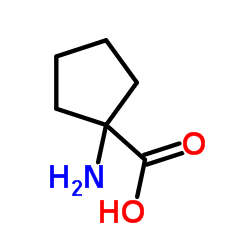Furthering pharmacological and physiological assessment of the glutamatergic receptors at the Drosophila neuromuscular junction.
J-Y Lee, D Bhatt, D Bhatt, W-Y Chung, R L Cooper, J.-Y. Lee, D. Bhatt, D. Bhatt, W.-Y. Chung, R.L. Cooper
文献索引:Comp. Biochem. Physiol. C. Toxicol. Pharmacol. 150(4) , 546-57, (2009)
全文:HTML全文
摘要
Drosophila melanogaster larval neuromuscular junctions (NMJs) serve as a model for synaptic physiology. The molecular sequences of the postsynaptic glutamate receptors have been described; however, the pharmacological profile has not been fully elucidated. The postsynaptic molecular sequence suggests a novel glutamate receptor subtype. Kainate does not depolarize the muscle, but dampens evoked EPSP amplitudes. Quantal responses show a decreased amplitude and area under the voltage curve indicative of reduced postsynaptic receptor sensitivity to glutamate transmission. ATPA, a kainate receptor agonist, did not mimic kainate's action. The metabotropic glutamate receptor agonist t-ACPD had no effect. Domoic acid, a kainate/AMPA receptor agonist, blocks the postsynaptic receptors without depolarizing the muscle. However, SYM 2081, a kainate receptor agonist, did depolarize the muscle and reduce the EPSP amplitude at 1 mM but not at 0.1 mM. This supports the notion that these are generally a quisqualate subtype receptors with some oddities in the pharmacological profile. The results suggest a direct postsynaptic action of kainate due to partial antagonist action on the quisqualate receptors. There does not appear to be presynaptic auto-regulation via a kainate receptor subtype or a metabotropic auto-receptor. This study aids in furthering the pharmokinetic profiling and specificity of the receptor subtypes.
相关化合物
| 结构式 | 名称/CAS号 | 分子式 | 全部文献 |
|---|---|---|---|
 |
环亮氨酸
CAS:52-52-8 |
C6H11NO2 |
|
Quantitative structure-activity relationship and complex net...
2008-11-13 [J. Med. Chem. 51 , 6740-51, (2008)] |
|
In vivo stimulus-induced vasodilation occurs without IP3 rec...
2013-05-08 [J. Neurosci. 33(19) , 8411-22, (2013)] |
|
Drug design, in vitro pharmacology, and structure-activity r...
2009-08-27 [J. Med. Chem. 52 , 5093-107, (2009)] |
|
Quantal amplitude at the cone ribbon synapse can be adjusted...
2011-01-01 [Mol. Vis. 17 , 920-31, (2011)] |
|
Conformations of peptides containing a chiral cyclic α, α-di...
2010-11-01 [J. Pept. Sci. 16(11) , 621-6, (2010)] |